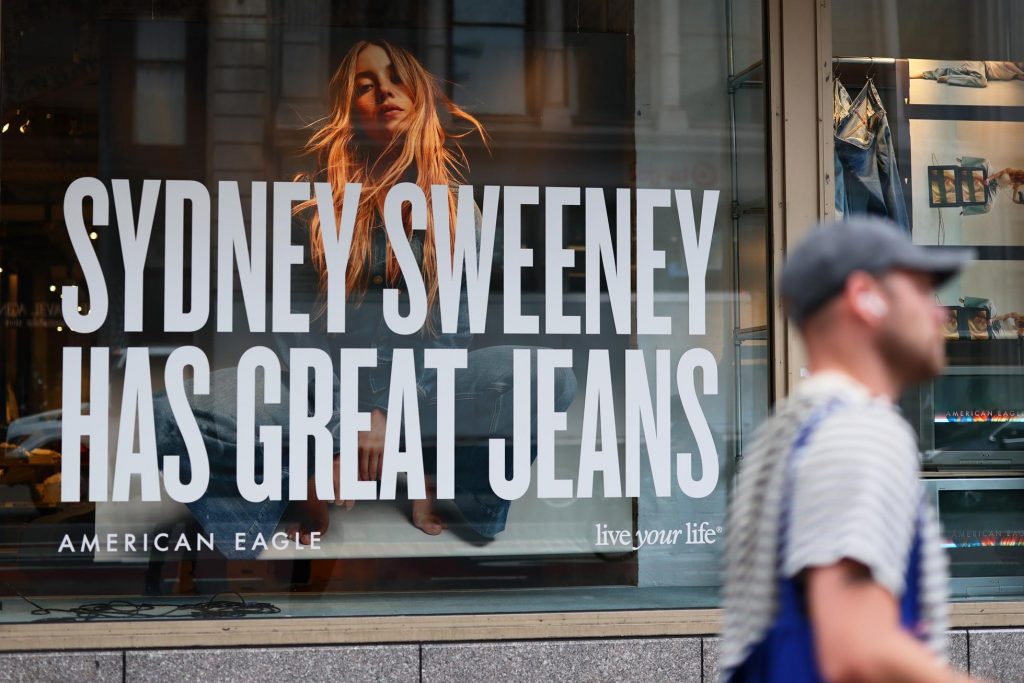Despite the constant stream of celebrity faces plastered on the social channels of the industry’s most lucrative fashion and beauty brands, not every partnership results in a success. As the standards for the media one consumes—and, most importantly, impacts one’s buying habits—continue to rise in an era defined by authenticity, effectively leveraging celebrity collaborations to connect with audiences has grown to be somewhat of a daunting task.
As brands like Gap relish in online praise for the success of its series of choreographed denim advertisements—the most popular of which being its Better in Denim collaborative marketing campaign with popular girl group KATSEYE—competitors in nearly identical spaces fall victim to vicious online ridicule at the release of poorly-received promotional visuals—note American Eagle’s recent video collaboration with actress Sydney Sweeney aptly titled Sydney Sweeney Has Great Jeans.
And so, as advertisements’ relative acceptance among audiences continues to vary by such a great degree, it begs the question of what attributes are essential to the production of a successful celebrity-faced brand collaboration?
“I think there has to be relatability because there needs to be a human quality,” said Jeanine Polizzi, founder of Biz in Bloom, a strategic branding and communications consultancy, and assistant fashion marketing professor at Parsons School of Design, in an interview.
“Everyone wants to be able to see themselves in a brand,” she said. “Bringing in celebrities that are multicultural help more people see themselves in a brand than in the past. Bringing in younger celebrities helps younger consumers see themselves in a brand where potentially they may not have seen themselves before.”
Because of this, it’s often found that celebrity campaigns which highlight aspirational qualities over relatable ones, such as exclusivity, perfection or superiority, as a main approach to garner audience attention don’t fair well with a modern day viewership made up of both diverse and culturally conscious consumers.
“We live in a very divisive climate, at least here in the U.S.,” Polizzi said. “I think not being aware of the divisiveness that some words can have, not having that humanistic approach, not having that touch, not being able to see more people, more bodies in a campaign, is really what makes it fail. Because right now, everyone has access, and everyone likes to see themselves. So to put someone who is this completely unrelatable human into a campaign, it doesn’t help. It will be a fail. Nobody is perfect. We don’t strive for perfection. Perfection is an outdated kind of concept.”
Additionally, as greater access to products has allowed for more decisive shopping practices, modern consumers hold these celebrity-faced campaigns to a much higher standard than those of previous generations and support the selection of a star that not only looks good selling products, but actually connects with the brand’s target demographic.
“These days, we really look at how a celebrity aligns with the brand as well in terms of values,” Polizzi said. “So we, as consumers, like to pick things apart. We want transparency in terms of, how does this celebrity align?”
Now, while causing strife amongst consumers by limiting visual diversity, neglecting authenticity or missing the mark with a celebrity paring is often the cause of rejection from audiences, Antonio Padilla, a content creator who runs a popular fashion news Instagram account under the username @immaculate.style, suggested in an interview that the high viewer retention of such advertisements in the age of virality might be inflating the issue of misalignment altogether.
“I feel like most brands know their consumer and know who they want to market to and I feel like we don’t really see a lot of misalignment,” Padilla said. “I mean, how many campaigns come out a year? Probably in the thousands for fashion brands or even beauty brands. And there’s always what, three or four, maybe five a year that go viral because it feels like it’s misrepresents who the consumer is.”
And so, as brands’ efforts to please the consumer grow increasingly challenging with the liability of choosing the appropriate celebrity face and the unpredictable takeoff of an ill-conceived campaign, a query as to why even develop these types of projects emerges.
Padilla argues that the influence of a famous individual is enough to take the risk—despite the backlash that may occur if the campaign isn’t received by the public as predicted.
“The purpose of a celebrity is to drive awareness for either the brand or the product they’re trying to market,” he said. “Make no mistake, celebrities are influencers. They have a strong community. They have a strong following.”
Another reason brand’s can’t resist a star-studded campaign: the proven impact connection has on a consumer’s sending habits. In a study preformed by Sprout Social, the social media management platform found that 57% of U.S. consumers are more likely to increase their spending when shopping from a brand they feel connected to. Thus, with the implementation of this celebrity-based strategy, brands can easily create more meaningful and effective advertisements that resonate with younger shoppers—an essential step to staying relevant amongst a rising Gen Z and Gen Alpha consumer base.
“As an older brand, you need to figure out how to reinvent yourself for a younger audience, or how to be in front of a younger audience and celebrity is a great way to do that,” Polizzi said.

